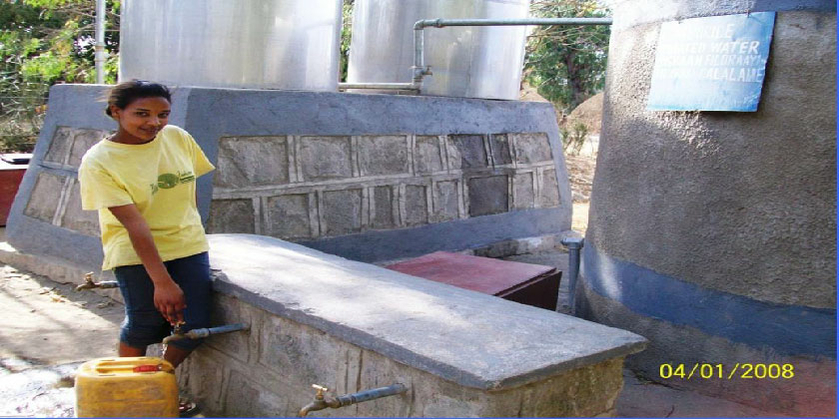Department Environmental Social Sciences
Using persuasive arguments to change perceived costs and thus consumption of safe water in Ethiopia

Project description
Fluorosis is caused by undue fluoride uptake from drinking water. In the Ethiopian Great Rift Valley, the consumption of fluoride-free water from a community filter was promoted by a) a traditional information intervention targeting perceived vulnerability, and b) a systematic behavior change strategy targeting perceived costs. While the intervention targeting perceived vulnerability showed no effects, cost persuasion decreased the perceived costs to a 50% lower value and increased the consumption of fluoride-free water by 20%. This showed that altering subjective perceptions of facts like prices or walking distances can change behavior even without changing objective circumstances.
Context
Around 200 million people worldwide rely on drinking water that is contaminated with excess fluoride. In Ethiopia, 8.5 million people are at risk of developing fluorosis from their water due to excessive fluoride uptake. Fluoride is a naturally occurring mineral that at elevated levels becomes a geogenic contaminant in groundwater. Because there is no effective medical treatment for the disease, the prevention of fluoride uptake is crucial.
Objectives
The main objective of this study was to compare the effectiveness of two behavior change strategies in promoting the consumption of safe water from a fluoride-removing community filter.
Activities
Step 1 & 2: Identify, measure and determine behavioral factors of fluoride free water use
- Data gathering started with a baseline assessment in September 2010.
- Differences between doers (100% use) and non-doers (less than 100% users) were compared in all behavioral factors.
- Perceived monetary costs were significantly higher in non-doers than in doers, meaning that the non-doers rated the fluoride free water as 1.5 times more expensive.
- No differences in perceived vulnerability were found, meaning that both groups assessed the risk of getting fluorosis in the same way.
Step 3: Select behavior change techniques (BCTs) and design behavior change strategies to enhance fluoride free water use.
- The behavior change technique (BCT) inform about and assess costs and benefits was selected to target perceived costs. The corresponding behavior change strategy first stressed that a higher price for a product means that this product is of higher quality. Second, a consumption and cost calculation was conducted with the household to define the real additional costs of purchasing fluoride free water solely for drinking and cooking. In this way, the household received realistic estimates of how much filtered water was required and how much money the household would have to spend per week. This calculation demonstrated that the additional costs are quite small.
- As a comparison intervention, a behavior change strategy was applied to raise risk awareness. It used the BCTs inform about and assess personal risk and arouse fear. First, the promoters asked for the names and ages of all children living in the household. Then, the promoter communicated individualized risk information for every child. The promoters showed pictures of children and adults with dental and skeletal fluorosis and indicated on a visualized scale how their risk could be reduced.
Step 4: Implement and evaluate behavior change strategies for fluoride free water use.
- The behavior change strategies were evaluated through a before-after control trial.
- The local non-governmental organization implemented the interventions in October 2010.
- Half of the households received the cost persuasion strategy and the other half the risk-awareness strategy.
- A post-intervention survey was conducted in December 2010 to measure the behavioral factors and the consumption behavior.
Findings
- As expected from the baseline data, the behavior change strategy targeting health risk awareness had no effects.
- The cost persuasion strategy decreased the perceived costs by 50% and increased the consumption of fluoride-free water by 20%.
Conclusion
This project demonstrated that systematic behavior change strategies can change behavior by altering subjective perceptions of facts such as prices or walking distances even without changing objective circumstances.
